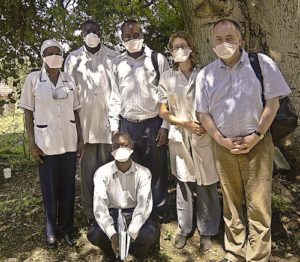
Successful treatment of tuberculosis (TB) is one of the key indicators of a TB Control Program’s performance and essential to containing the emergence of anti-TB drug resistance. Multi-drug resistant TB (MDR-TB) treatment requires medicines that are expensive, involve longer treatment regimens, are toxic, and can cause patients to have severe side effects. However, international guidelines and national regulations for the diagnosis and treatment of MDR-TB seldom provide unbiased sources of information on monitoring drug use, side effects, or indicators to assess the quality of prescribing according to the regulations.
For proper and impartial monitoring of rational drug use, drug utilization reviews (DUR) are used to identify common problems such as inappropriate product selection, incorrect dosing, avoidable adverse drug reactions, and errors in drug dispensing and administration (see Managing Drug Supply 3: Chapter 30). Under a prior MSH project, an indicator based guide was developed entitled Guidelines for Implementing Drug Utilization Review Programs in Hospitals. It provides tools for conducting DURs as an ongoing, systematic approach to assess the appropriateness, safety, and effectiveness of a medication to improve patient care.
To assist TB Control programs to meet their performance goals, SIAPS conducted a primary literature search that includes text books, medicine package inserts, and World Health Organization (WHO) MDR-TB guidelines to compile information about MDR-TB treatment and diagnosis. From the literature, drug use monitoring criteria and indicators were selected for each anti-MDR TB drug, and then data collection forms were developed. Indicator criteria to monitor medicines prescribed to treat side effects of MDR-TB treatment will be developed in the near future.
Earlier this year, SIAPS received approval from the Republic of Kenya Ministry of Public Health and Sanitation (MOPHS) to conduct a field test of the generic MDR-TB DUR guidelines at five MDR-TB treatment facilities. The goal was to receive feedback from the National Tuberculosis Program (NTP) and local TB health care providers on the appropriateness of the indicators and ease of data collection form use, and to determine the level of TB care providers’ acceptance of the tool in real MDR-TB settings.
SIAPS personnel visited five representative treatment centers from provinces with a high burden of MDR-TB and with health care providers with expertise in in-patient, ambulatory, and community settings. During each visit, health care providers reviewed DUR indicators, criteria, and data collection forms, and then provided input on how to improve them.
Reviewers not only provided valuable feedback, but also expressed enthusiasm regarding potential use of the tool in the future. Because the guidelines offer a single source of MDR-TB treatment management information, reviewers highlighted the potential for improved MDR-TB care in communities by enabling them to be less reliant on the treatment facilities for decision making and thus decreasing the need to refer patients to district or provincial treatment centers that may be farther away.
Additionally the field test uncovered the need for conducting and documenting baseline assessments prior to starting treatment and routine assessments during treatment to monitor potential development of adverse reactions. Recommendations included conducting audiometric testing (as some second-line drugs can cause hearing loss) and cardiac monitoring, and decreasing turn-around-times on thyroid test results (to ensure timely adjustments to patient medications to better manage the adverse reactions).
SIAPS will continue to provide technical assistance to the NTP in Kenya to customize their generic guidelines, assist in implementing the guidelines country wide, and provide guidance on data collection and analysis to improve their MDR-TB program. SIAPS will also continue to solicit feedback from the Kenya Drug Resistant TB program to revise and finalize the generic MDR-TB guidelines. Results from the implementation in Kenya will be disseminated.
Preliminary results obtained during the Kenya field test will be presented at the 43rd World Conference on Lung Health in Kuala Lumpur, Malaysia in November 2012. SIAPS will conduct a one-day workshop at the conference that will include a session on reaching out to a wider audience to introduce and discuss the MDR-TB Guidelines.
The SIAPS TB portfolio is refining the MDR-TB DUR methodology to provide a generic indicator-based tool for conducting ongoing drug utilization reviews (DURs) that all NTPs can incorporate as part of their routine program performance monitoring.

